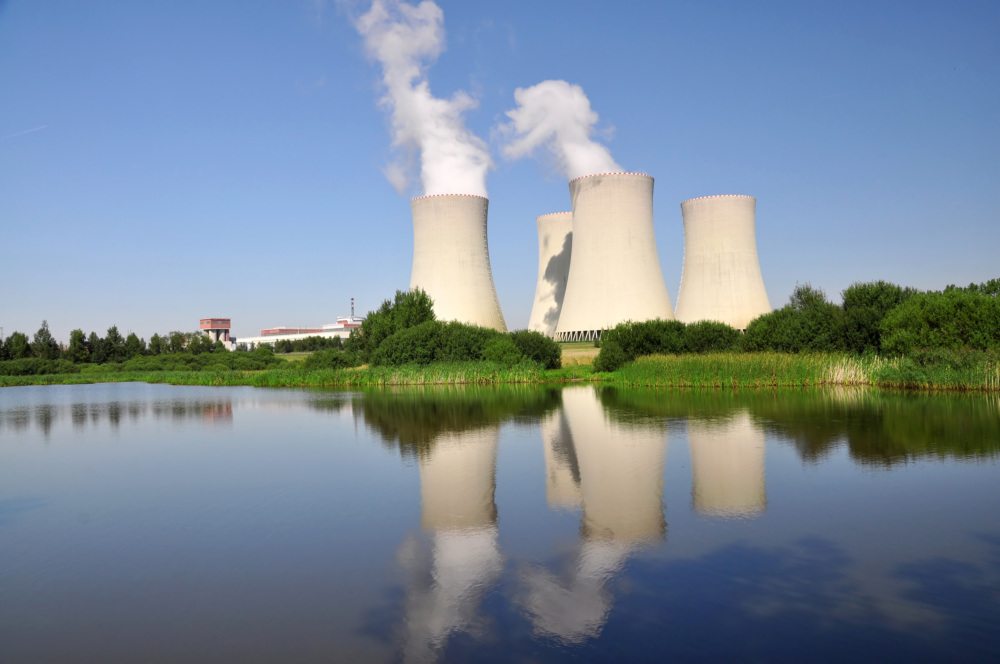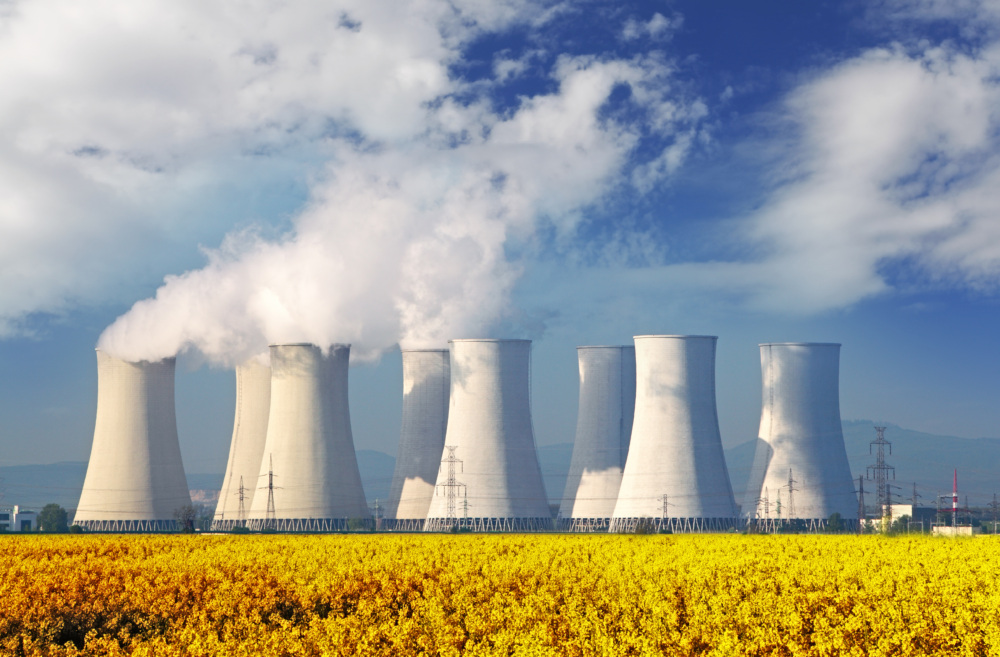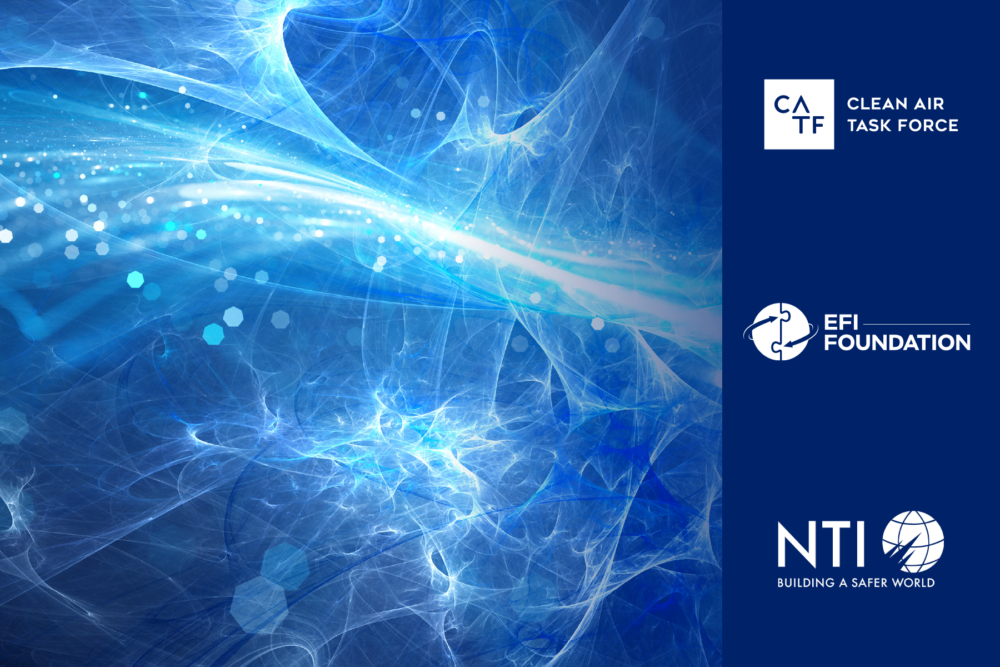
Cole J. Harvey
Research Associate, The James Martin Center for Nonproliferation Studies
The Board of Governors of the International Atomic Energy Agency (IAEA) on November 27, 2009, cleared the way for a nuclear fuel reserve at Angarsk, Russia, under agency auspices. The Angarsk fuel reserve, first proposed by Russia in September 2007, is meant to ensure the supply of low-enriched uranium (LEU) to participating states in the event of a political disruption in the international uranium enrichment services market. The fuel bank should not be confused with the International Uranium Enrichment Center at Angarsk, which does not require IAEA approval. (See "The International Uranium Enrichment Center at Angarsk: A Step Towards Assured Fuel Supply?" NTI issue brief by Anya Loukianova).
The board empowered the director-general of the IAEA to conclude agreements with Russia and with states that may be interested in participating in the reserve, and approved a model version of the latter type of agreement. However, no agreement with any state seeking to participate in the reserve has been signed as of March 2010.
While enriched uranium is necessary to fuel most civilian power reactors, enrichment technology can be used to produce the fissile material for nuclear weapons. The dual-use nature of the technology is at the heart of the dispute over Iran's nuclear program, and is the reason that some states, including the United States, are eager to find approaches to the nuclear fuel cycle that provide alternatives to domestic uranium enrichment facilities. This attitude was succinctly expressed in a 2007 British paper submitted to the IAEA, which said, "The fewer the number of enrichment installations, and the more they are under multinational control, the lower the potential for nuclear proliferation."[1]
The risk that imports of nuclear fuel might be cut off for political purposes is one reason a state might choose to develop a national uranium enrichment capability. Proponents of the fuel bank concept argue that, by guaranteeing fuel supply to wary states, the reserve reduces the incentive for such states to develop their own indigenous uranium enrichment facilities. U.S. President Barack Obama endorsed the concept in his April 5, 2009, speech in Prague, saying that the international community "should build a new framework for civil nuclear cooperation, including an international fuel bank, so that countries can access peaceful power without increasing the risks of proliferation."[2]
The fuel bank at Angarsk is one of a dozen proposals made in recent years, following the exposure of Iran's covert enrichment facility in 2003, meant to provide assurance of supply to importer states by taking a multilateral approach to the nuclear fuel cycle. These approaches range from an enrichment bond concept proposed by the United Kingdom (whereby supplier states would grant legally-binding advance assurance of export, with the IAEA as guarantor[3]), to fuel banks like the one intended for Angarsk, to full-scale international uranium enrichment facilities proposed (separately) by Germany and Russia.[4]
The Angarsk fuel reserve, and its host facility, the International Uranium Enrichment Center, are the most mature of these proposals. Another proposed fuel bank, put forward by the Nuclear Threat Initiative, has not yet been endorsed by the IAEA despite having received pledges of more than $100 million in funding from the United States, the European Union, Kuwait, the United Arab Emirates, and Norway, as well a $50 million pledge from American billionaire Warren Buffett.[5] The NTI bank, if approved, is expected to be housed at the Ulba Metallurgical Plant in Ust Kamenogorsk, Kazakhstan.[6]
Many states are uneasy about multilateral fuel cycle proposals. These states fear that such proposals will eventually lead to demands that they give up the right to domestic uranium enrichment and other fuel-cycle technologies, a concern that has stymied other multilateral approaches, including the NTI fuel bank proposal.[7]
These states frequently recall that the NPT recognizes the "inalienable right of all Parties to the Treaty to develop, research, production and use of nuclear energy for peaceful purposes," in conformity with each state-party's obligation to refrain from acquiring nuclear weapons.[8] At the May 2009 NPT Preparatory Committee meeting, the Group of Non-Aligned States (a large bloc of mainly African, Asian, and South American countries) sought to put the brakes on multilateral fuel cycle concepts, saying that the topic calls for "extensive, comprehensive and transparent consultations." The group stated that it "rejects, in principle, any attempts aimed at discouraging certain peaceful nuclear activities on the ground [sic] of their alleged 'sensitivity.' Concerns related to nuclear non-proliferation shall not in any way restrict the inalienable right of all states to develop all aspects of nuclear science and technology for peaceful purposes."[9]
No state has announced that it will join the Angarsk fuel bank, according to a Vienna-based diplomat, since the reserve itself has not yet been created.
The Angarsk fuel bank will be composed of 120 tons of LEU in the form of uranium hexafluoride (UF6), with an enrichment level ranging from 2 to 4.95 percent.[10] That quantity is equivalent to two full fuel loads for a typical 1,000 megawatt reactor,[11] and could be replenished if depleted.[12] The cost of supplying and maintaining the fuel bank will be covered by Russia.[13] The reserve would be kept under IAEA safeguards.
Any non-nuclear-weapon state* that is in compliance with its nonproliferation obligations and is a member of the IAEA is eligible to participate in the program. Participating countries are not required to forego any of their nuclear fuel-cycle rights, including the right to develop enrichment capabilities on their own soil. Nor are they required to accept enhanced IAEA inspections by modifying their safeguards agreements with the IAEA to incorporate the terms of the IAEA's model Additional Protocol to such agreements. As a practical matter, however, virtually all eligible states that are building nuclear power plants today have already adopted the Additional Protocol.
In the event of a disruption in the normal supply of LEU in the commercial market to a contracting state (for reasons unrelated to the recipient's nonproliferation undertakings or to commercial delinquency), the IAEA would release a portion of the fuel reserve to that country. The recipient would be charged the market price for the uranium it receives.[14] The Russian working paper does not specify how or where the UF6, which is the form of uranium used in the enrichment process, will be fabricated into the pellets of uranium dioxide needed to fuel reactors. It may also be necessary to enrich or de-enrich the stored LEU as required by a particular reactor, a provision that is not accounted for in the Russian proposal.
In detailing the proposal at the 2009 NPT Preparatory Committee meeting, the Russian government laid out several principles for the fuel bank. According to the Russian working paper, the bank will be:
As noted, the fuel bank would rest on two legal agreements. The first, between Russia and the IAEA, would oblige Russia to make an amount of LEU available to the IAEA when requested by the agency's director-general. The second, between the IAEA and a recipient state, would lay out the obligations a recipient would have to fulfill in order to receive LEU. According to the Russian proposal at the 2009 NPT Preparatory Committee session, the IAEA would have to certify that all nuclear material in the recipient state had been accounted for, with no diversion of fissile material from peaceful purposes. The agreement would also require that the recipient state have no safeguard implementations issues under consideration by the IAEA Board of Governors.[16]
The Board of Governors authorized the director-general to conclude these agreements at its November 27 meeting and approved the text of a model agreement between the IAEA and recipient states. The director-general does not need prior approval by the Board to conclude supply agreements with recipient states, but must keep the Board informed of the progress of such agreements.[17] The agreement between the IAEA and Russia that formally established the reserve was signed on March 29, 2010.
The decision by the Board of Governors was careful to reaffirm the primacy of the existing commercial fuel market, noting that "the good operation of the market already provides assurances of supply," and that the fuel reserve will be accessed as "a back-up solution only." The board also emphasized that the "inalienable rights of all Parties to the NPT to develop research, production and use of nuclear energy for peaceful purposes" will not be affected by the fuel bank.[18]
Russia's representative to the IAEA, Ambassador Grigory Berdennikov, stated that nothing in the Russian proposal precluded states from developing their own enrichment capabilities. "Each state-party of the IAEA will voluntarily decide whether or not to make use of this offer," he added in remarks quoted by ITAR-TASS on November 27. "The director-general of the IAEA will make the decision to supply LEU to a state-party. No one can interfere with this process, which assures that decisions regarding the guaranteed reserve at Angarsk will be independent, open and free from the political environment."[19]
It is unclear whether transfers from the fuel bank would be covered by Nuclear Suppliers Group (NSG) regulations, of which Russia is a member. NSG rules prohibit the export of enriched uranium to states that lack comprehensive safeguards agreement with the IAEA over their entire nuclear complex. This provision would exclude exports to Israel and Pakistan, but not to India, which was granted a waiver by the NSG in September 2008. However, transfers from the fuel bank are not made directly to the recipient state, but rather to the IAEA, which then passes ownership of the LEU to the recipient. NSG requirements only cover transfers between states, not between a state and an international organization, so it is conceivable that the IAEA's role as middleman could skirt the NSG guidelines. This question will likely be clarified in the agreements between Russia, the IAEA, and recipient states, which are not publicly available as of this writing.
On March 29, 2010, Russia and the IAEA signed an agreement formalizing the creation of the reserve.[20] Sergei Kiriyenko, the head of the Russian nuclear corporation Rosatom, stated at the signing ceremony that up to 40 tons of LEU, or 30 percent of the reserve, would be at the Angarsk facility by the end of 2010. He added that "many countries," had expressed interest in the project.[21]
This interest is not surprising, given that the fuel reserve does not pose any financial risk to its participant states—all maintenance costs are to be borne by Russia, and the recipient state would only pay for the uranium it receives, at market price. Nevertheless, it is possible that few (or even no) states will seek to join the reserve, if most judge that the existing commercial fuel market already provides an adequate assurance of supply.
Some states will likely remain wary of the reserve and related proposals, fearing that they represent the first step toward international restrictions on the nuclear fuel cycle. They are not mistaken in their belief that those states promoting the fuel bank concept are mainly concerned with the risk of nuclear proliferation, and would prefer to minimize the number of uranium enrichment facilities under national control around the world. Knowing that restricting such facilities by international agreement would be very difficult to achieve, these countries are hoping to create attractive multilateral alternatives to domestic nuclear fuel cycle facilities in order to lure developing states away from the domestic fuel cycle option. The creation of the Angarsk reserve and the nearby International Uranium Enrichment Center are the first steps in that direction.
Presently, the fuel cycle issue is most prominently illustrated by the ambiguous Iranian nuclear program. The Angarsk fuel reserve would probably have little immediate effect on that issue, as Iran is currently ineligible to participate in the reserve as a result of several safeguards violations recognized by the IAEA Board of Governors. Furthermore, Iran is unlikely to be so persuaded by the availability of a multilateral reserve of LEU that it chooses to scrap its expensive, dispersed, and fortified uranium enrichment facilities. Nevertheless, an available, guaranteed reserve of fuel supervised by the IAEA could diminish the perceived need for national enrichment capabilities elsewhere—and limit the danger that the next generation of nuclear energy states may seek the ability to enrich uranium.
The term "non-nuclear-weapon state" may have two meanings, which could determine which states are eligible to participate in the fuel bank. The NPT defines a non-nuclear-weapon state as any state that did not detonate a nuclear explosive device prior to January 1, 1967. By this definition, India, Israel, North Korea, and Pakistan are non-nuclear-weapon states and could conceivably participate in the fuel bank if they met the other requirements. Factually, however, all four are (or are believed to be) nuclear-armed.
[1] IAEA INFCIRC/707, "Communication dated 30 May 2007 from the Permanent Mission of the United Kingdom of Great Britain and Northern Ireland to the IAEA concerning Enrichment Bonds – A Voluntary Scheme for Reliable Access to Nuclear Fuel," submitted by the United Kingdom, June 4, 2007.
[2] "Remarks by President Barack Obama," Prague, Czech Republic. April 5, 2009, www.whitehouse.gov.
[3] IAEA INFCIRC/707.
[4] Tariq Rauf and Zoryana Vovchok, "Fuel for Thought," IAEA Bulletin 49-2, March 2008. Pages 62-63.
[5] "NTI/IAEA Fuel Bank Hits $100 Million Milestone; Kuwaiti Contribution Fulfills Buffett Monetary Condition," NTI press release, March 5, 2009.
[6] "International Nuclear Bank: Helping World Peace?" Humphrey Hawksley, BBC News, www.bbc.co.uk. January 8, 2010.
[7] Horner, Daniel and Oliver Meier, "Talks on Fuel Bank Stalled at IAEA," Arms Control Today, October 2009.
[8] The Treaty on the Nonproliferation of Nuclear Weapons, Article IV, paragraph 1.
[9] "Statement by the delegation of the Republic of Indonesia to the United Nations on behalf of the Group of Non-Aligned States Parties to the Treaty on the Non-Proliferation of Nuclear Weapons, Cluster 3 Issues," May 8, 2009, www.reachingcriticalwill.org.
[10] "Development of the initiative of the Russian Federation to establish a reserve of low enriched uranium (LEU) for the supply of LEU to the International Atomic Energy Agency for its member States," working paper submitted by the Russian Federation to the 2009 NPT Preparatory Committee, May 6, 2009. NPT/CONF.2010/PC.III/WP.25. Hereafter referred to as Russian working paper.
[11] "Nuclear Power in Russia," World Nuclear Association, www.world-nuclear.org.
[12] Russian working paper.
[13] Russian working paper.
[14] Russian working paper.
[15] Russian working paper.
[16] Russian working paper.
[17] "Request by the Russian Federation regarding its Initiatve to Establish a Reserve of Low Enriched Uranium (LEU) for the Supply of LEU to the IAEA for its Member States," Resolution adopted by the Board of Governors, IAEA, November 27, 2009. GOV/2009/81.
[18] Ibid.
[19] "Sovyet upravlyayushchikh MAGATE odobril initsiativu Rossii o sozdanii garantiinogo zapasa nizkoobogashchennogo urana" [IAEA Board of Governors Approves Russian Initiative on the Creation of a Guaranteed Reserve of Low-Enriched Uranium"], ITAR-TASS, November 27, 2009. www.prime-tass.ru. Translation by the author.
[20] "Agreement Signed to Set Up a Low Enriched Uranium Reserve," International Atomic Energy Agency, March 29, 2010, www.iaea.org.
[21] "Russia Says U.N. Nuclear Fuel Bank Ready This Year," Reuters, March 29, 2010, www.nytimes.com.
Sign up for our newsletter to get the latest on nuclear and biological threats.
At this critical juncture for action on climate change and energy security, 20 NGOs from around the globe jointly call for the efficient and responsible expansion of nuclear energy and advance six key principles for doing so.
To make good on their COP28 pledge, countries need a new approach to building, regulating, and financing nuclear technology.
The Playbook emphasizes the need for a holistic approach to scaling nuclear energy, considering the unique challenges and opportunities specific to each country, and highlights the role that new international institutions could play in supporting a global nuclear expansion.


